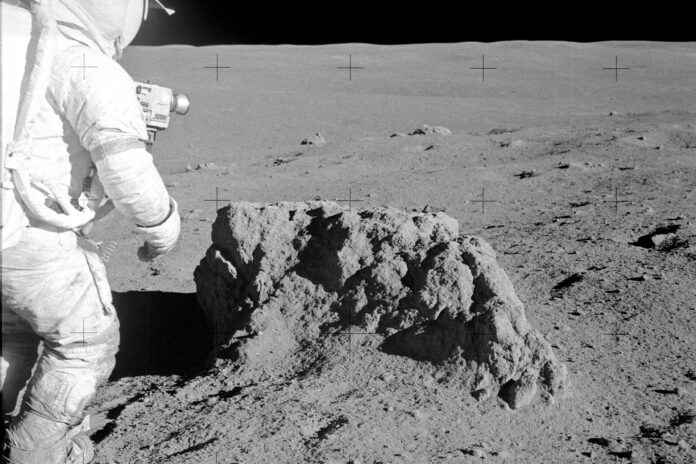As humanity looks to the cosmos with renewed interest, the Moon remains a celestial body of great intrigue. Among the lunar mysteries lies the regolith, a layer of soil covering the Moon’s surface. In this article, we’ll delve into the captivating world of lunar regolith, exploring its composition, origin, and significance in our quest for a deeper understanding of Earth’s nearest neighbor in space.
Composition and Origin
Lunar regolith, often referred to as moon dust, is a layer of loose, fragmented material that covers the Moon’s surface. Contrary to Earth’s soil, lunar regolith lacks organic matter and is primarily composed of fine-grained particles, including dust, rock fragments, and small glass beads. The regolith’s formation is a result of billions of years of micrometeoroid impacts, solar wind bombardment, and volcanic activity that have gradually broken down the Moon’s rocky surface.
The “Smell” of Moon Dust
Apollo astronauts who had the unique experience of walking on the lunar surface described the smell of moon dust as distinct and peculiar. The odor was often likened to the scent of spent gunpowder or the smell after a fireworks display. This phenomenon is believed to be the result of the lunar regolith reacting with the astronauts’ spacesuits and the vacuum of space, releasing volatile compounds that contribute to the unusual scent.
Challenges Posed by Lunar Regolith
While lunar regolith holds valuable insights into the Moon’s geological history, it also poses challenges for human exploration. The fine particles are abrasive and can potentially damage equipment and spacesuits. Moreover, the electrostatic charge generated by the regolith can cause it to cling to surfaces, making it a concern for both machinery and the health of astronauts. Researchers and engineers are actively working on developing technologies to mitigate these challenges as we look toward future lunar exploration missions.
Resource Potential
Beyond its challenges, lunar regolith presents exciting opportunities. Scientists believe that the regolith could harbor valuable resources, including water ice. Water is a critical component for future lunar habitation, serving as a potential resource for drinking water, oxygen production, and fuel for future space missions. Extracting and utilizing these resources from the regolith could significantly reduce the logistical challenges and costs associated with deep space exploration.
International Lunar Exploration
The study of lunar regolith is not limited to NASA and the United States. Various countries, including China, India, and Europe, have launched lunar exploration missions to study the Moon’s surface and bring back samples. These international efforts aim to broaden our understanding of lunar geology, potential resources, and the challenges posed by the lunar regolith.
Conclusion
Lunar regolith stands as a testament to the Moon’s complex geological history and the challenges and opportunities it presents for future human exploration. As space agencies and private entities set their sights on lunar missions, the study of moon dust continues to be a focal point in unraveling the mysteries of our cosmic neighbor and paving the way for humanity’s sustained presence beyond Earth.

